One day, three years ago when I was pregnant, my eyelids started to itch. It got worse each day until they were red and swollen. I had no idea whether it was pregnancy-related or something I was allergic to, but I felt like I couldn’t leave the house because it looked like I’d been crying hysterically for hours.
At my next OB check-up, I asked my doctor about it. She asked if I’d started using any new products on my face. The only thing I could come up with was a new tube of mascara I began using a month ago. Knowing my sister’s extreme sensitivity to formaldehyde, I looked up the ingredients on the Skinsafe app, and sure enough, there was formaldehyde in this mascara.
I don’t have what you would call “sensitive skin,” but after long enough exposure to formaldehyde, the skin around my eyes just couldn’t take it anymore! I threw away that tube of mascara, and made a mental note to never buy that brand again. It took a good week for my eyes to slowly get back to normal.
What was truly “eye-opening” to me, is that it took so long for my body to react—and so long for my body to recover!
What is formaldehyde?
Formaldehyde is that nasty smelling stuff used to pickle dead frogs to be dissected in biology class. . . and a commonly found preservative in just about all your beauty products, from soaps, to make-up, nail polish, shampoo, lotion, hair gel, and deodorant.
Sadly, formaldehyde isn’t the only common ingredient in our household products that is a problem, and it’s not the worst one either! It’s just one that tends to cause outwardly noticeable issues.
When I was going through my FertilityCare Practitioner training, my supervisor told me about a couple she’d worked with who had struggled to get pregnant for years. She’d taught them to chart the woman’s cycle, and referred them for medical treatment to heal underlying issues. They’d gotten treatment and yet they still couldn’t conceive. Years later, for some reason, they quit using fabric softener dryer sheets and—Surprise! She got pregnant!
How endocrine disruptors impact fertility
Sound like a coincidence? Maybe, but when you understand that the fragrance and chemicals in dryer sheets are endocrine disruptors, this story makes more sense. In particular, dryer sheets contain chemicals that can react with air to create—yep, you guessed it—formaldehyde.
Endocrine disruptors, also called xenoestrogens, are chemicals that mimic our natural reproductive hormones (mostly, as the name implies, estrogen). When we absorb these chemicals through our skin, they target our organs just as natural estrogen does. This causes unbalanced hormones, affecting our health and fertility.
Unless you are extremely conscious about what you bring into your home, your house is probably loaded with endocrine disruptors. If formaldehyde causes your skin to swell and itch, what kind of unseen damage is it (and other endocrine disruptors) causing inside your body?!
Though it’d be nice to give you a list of ingredients to avoid, I simply can’t. There are thousands of variations of these chemicals with different names. And companies don’t have to list exactly what is in “fragrance” or “parfum,” so you can bet there is probably something in that “fragrance” that you don’t want soaking into your body.
The good news is that by educating yourself and making some simple swaps, you can protect yourself and your family from these common chemicals. In fact, you can significantly reduce the burden of endocrine disruptors on your body (and your family’s bodies) just by focusing on eliminating the main carriers of the aforementioned formaldehyde, Bisphenol A (BPA), and phthalates.
Bisphenols and Phthalates are two of the most widely-used endocrine disruptors
Bisphenol A (BPA) is an industrial chemical used in the manufacturing of plastics. BPA exposure is linked to reproductive disorders like endometriosis, polycystic ovary syndrome (PCOS), and breast cancer.
Unfortunately, BPA is also one of the most widely produced chemicals in the world. It’s found in high concentrations in the lining of canned foods, plastic food and beverage containers, and even on receipts and newspapers.
Phthalates are a group of chemicals that are widely used in beauty products, and are known to cause an estrogenic effect in the body. Too much estrogen can throw off the careful balance of progesterone and estrogen necessary for a healthy cycle. This can mean painful or heavy periods, irregular cycles, abnormal cervical mucus patterns, endometriosis, infertility, and cancer.
Phthalates are just as bad for the men in your life; they’re known to lower testosterone levels, diminish sperm quality, and affect developing testes in unborn baby boys, affecting their fertility as adults.
Start making small changes to what you bring into your home
It’s overwhelming to think of how chemical-laden our food, food containers, cleaning supplies, and health and beauty products are. Knowing how to begin making changes can be daunting. The positive news is that people are beginning to wake up to the problems that chemicals create in our bodies, and more “clean” products, free of BPA, phthalates, formaldehyde, and other endocrine disruptors are (thankfully!) becoming available all the time.
But until the rest of the industry catches up, my best advice to live a more chemical-free life is to simply start with one change at a time. It’s taken me years to find DIY soap recipes that work, replace our food storage containers and drinking cups, and find a new hair gel I like—and I’m still working to find a natural deodorant my husband likes! It’s an ongoing process avoiding endocrine disrupting chemicals that will affect your family’s health and fertility, but worth the effort when you understand how dangerous they are, especially to our still-developing children.
For the most impact, I propose you start with changing just one or two of the things you put in your body, and what you put on your body.
Avoid chemicals in your food and drink
This is a no-brainer: what you ingest matters! Therefore, what your food is stored inside of matters, too.
- Use glass containers, instead of plastic, for food storage
- Find reusable glass or stainless-steel drink containers and metal straws for your coffee, tea, and water
- Use fresh or frozen fruits and vegetables, instead of canned
- Don’t buy or use any packaging that has the recycling code 3 (phthalates) or 7 (BPA)
Avoid chemicals in your beauty and laundry products
Your skin is the largest organ in your body and absorbs everything you put on it. In fact, in her book, The Fifth Vital Sign, Lisa Hendrickson-Jack says “If you wouldn’t put it in your mouth and eat it, you shouldn’t put it on your skin!”
Don’t overlook what you’re putting on your clothing, either. We wear clothes almost 24/7 and snuggle up with a pillow and blankets all night. Whatever residue is on those fabrics will absorb into our skin.
- Each time you need to buy a new bottle of something, look for a new, natural brand to try
- Avoid anything that has “fragrance” or “parfum” in the ingredient list
- Try making your own lotions with coconut oil and unrefined shea butter
- Make your own shampoo or foaming hand soap (recipes below)
- Use washing balls (Google “washing balls” or “laundry balls”)
- Use wool dryer balls (instead of fabric softener) to cut down on drying time
- Use the apps ThinkDirty or SkinSafe to see how safe your products are
As you go endocrine disruptor-free, think economically
Resist the urge to go and throw out every household cleaner or personal care product you own! This is definitely an instance where you don’t want to let “the perfect be the enemy of the good.” To avoid products that interfere with your and your family’s natural hormone production, simply begin by replacing your household and beauty products as they run out. Start being smart about what you store your food and beverages in (for example, start buying frozen instead of canned as you use up pantry items, and scour local Buy Nothing groups for the excess glass food containers that people literally always seem to be giving away). If ever in doubt, use a phone app like Think Dirty or Skinsafe to evaluate the ingredients on each product to avoid the toxins that could hurt your health. Oh, and don’t forget that hormonal birth control is itself one of the most pervasive endocrine disruptors available (which means you could significantly limit the burden of endocrine disrupting chemicals on your body, simply by switching to a fertility awareness method for family planning instead).
With a few mindful swaps, you can start improving your health and fertility today—and your body will likely thank you for any reprieve from the onslaught of chemicals it faces every day!
Recipes for homemade, endocrine disruptor-free household and personal care products
Homemade Shampoo
4 T. baking soda
4 cups water
20-30 drops of good quality essential oil (optional, but lemon, peppermint, rosemary, cedarwood, or tea tree work well)
Mix together in a bottle. For use, shake well and squirt on your scalp (¼-½ cup). Scrub and rinse well.
Homemade Foaming Hand Soap
¼ cup organic castile soap (Dr. Bronner’s is a brand that is easy to find in many stores)
1 squirt fractionated coconut oil
10-15 drops of good quality essential oil (optional, but it’s fun to experiment with smells!)
Add to a foaming pump bottle and finish filling with water. Gently mix and enjoy!
Homemade Laundry Scent Booster
2 cups coarse Kosher salt
20 drops of good quality essential oil (lavender, lemon, or rosemary works well for laundry)
Mix and store in an airtight container. Add a large spoonful to the washing machine with your regular load of laundry!
Additional Reading:
3 Simple Tips to Limit Endocrine Disruptors and Balance Hormones Naturally
How an Anti-inflammatory Diet Can Help Balance Hormones
The Links between Irregular Cycles, Birth Control, and Early Death
Pill chemicals in waste water cause endemic feminization of male fish



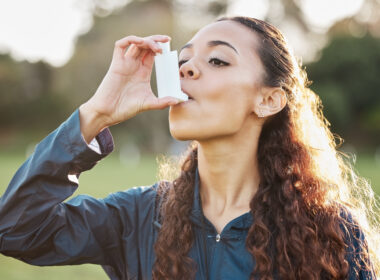
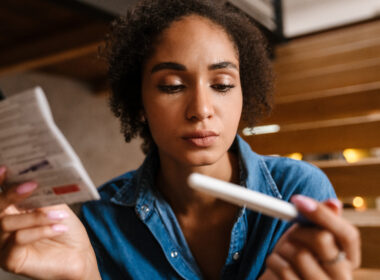
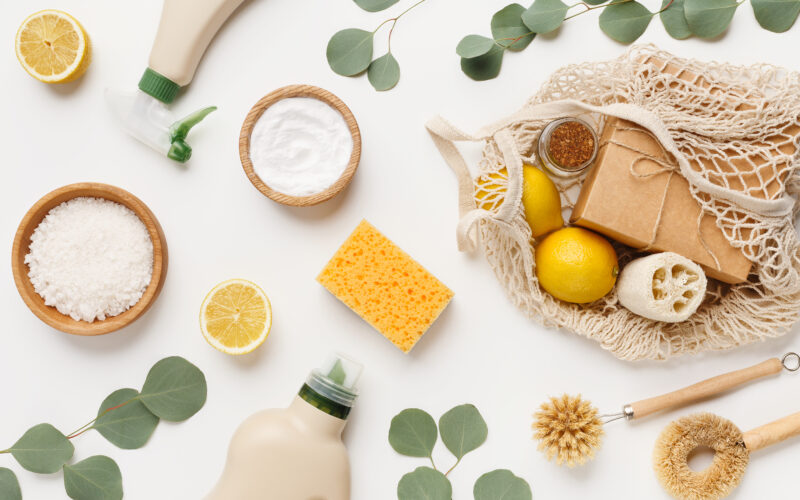



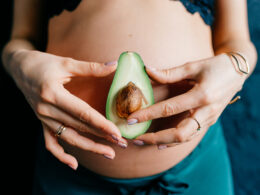

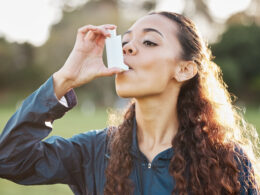
Lavender essential oil is also an endocrine disruptor